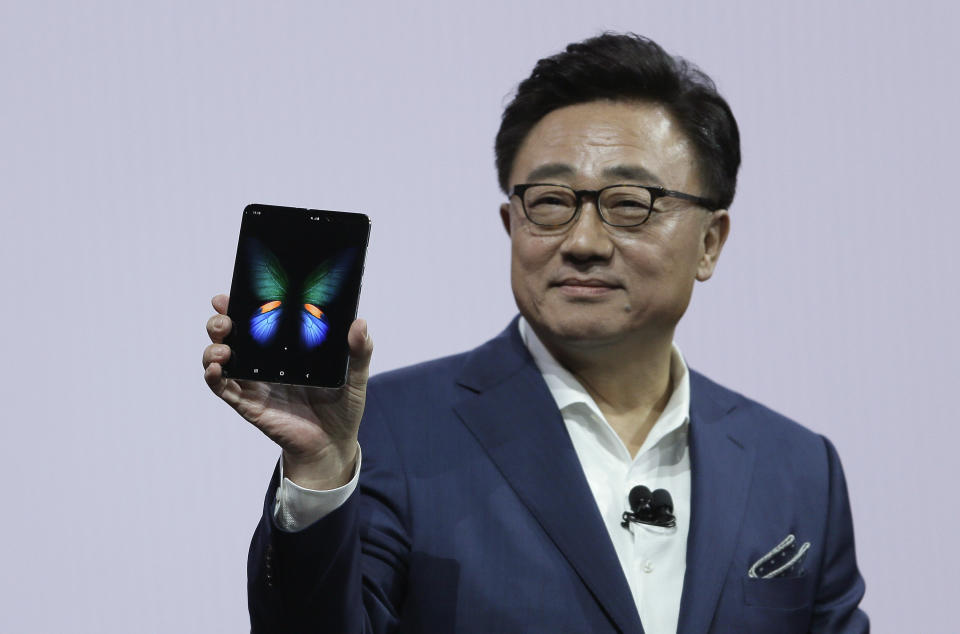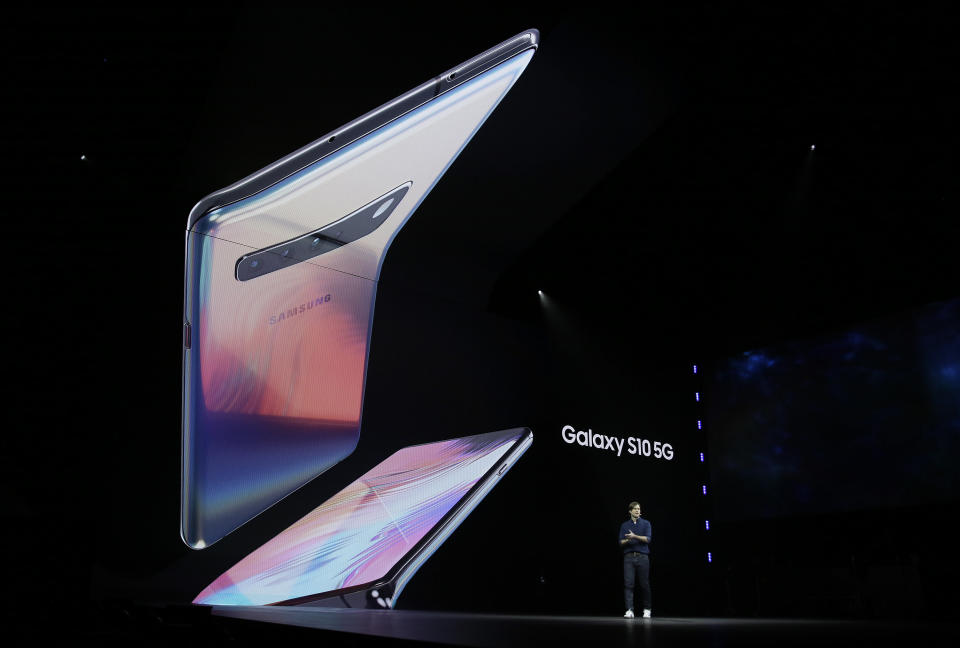It's still not clear why consumers would need a foldable smartphone

Will foldable displays in smartphones take off or fall flat?
It was hard to tell from Samsung’s announcement on Wednesday of the Galaxy Fold, the first smartphone with a foldable display. The device, which goes on sale April 26 for a staggering $1,980 — more than many computers — unfolds its 4.6-inch screen to reveal a 7.3-inch tablet with its “Infinity Flex Display.” Also, on-board: a 64-bit processor with eight cores, 512 gigabytes of built-in storage, and 12 gigabytes of RAM.
That’s a lot of power beneath the hood, but analysts Yahoo Finance spoke to were mixed on whether the Galaxy Fold — and foldable displays in general — will find widespread adoption.
“The pricing makes no sense: It's not mass market,” explains Charlene Li, a principal analyst at the San Francisco-based Altimeter Group and author of “Open Leadership.” “This is the first of a kind, and the people who are going to buy this are the ones who really want to be seen, opening and closing this. They want to be early adopters.”
Forrester vice president and principal analyst Thomas Husson also expressed doubt.
“While definitely a new design leveraging a real breakthrough in display technology, I am still skeptical: What is the real consumer benefit?” wondered Husson. “This is mostly about the modularity of the screen to adapt to your contextual needs whether you want to multitask on a tablet or use a smartphone.”
A work-in-progress
Samsung on Wednesday touted the Galaxy Fold’s multitasking chops for juggling three open apps at once, as well as a feature called “App Continuity,” the ability to start interacting with an app on the smaller front screen and continue using it on the larger screen inside. Yet even Samsung acknowledged the device was essentially a work-in-progress, and it expected to be “surprised” with how the Galaxy Fold is used by consumers day to day.

That doesn’t set the stage well for foldable displays in general, which some smartphone manufacturers are banking on to boost flattening sales. Motorola, for instance, is expected to launch a new version of the Razr phone for $1,500 later this year with a foldable display of its own. Huawei and Xiaomi, meanwhile, are also reportedly developing similar devices.
Untapped use cases aside, however, it would certainly help if the devices became cheaper. Lower prices are generally more likely the longer technologies — foldable displays, in this case — are manufactured and available.
“It might get more traction if it moves down market significantly,” conceded Tuong Nguyen, principal analyst at Gartner. “But as a pretty lazy consumer, I feel some of those use cases might not hold up on a regular basis.”
Husson has a more bullish take. Since the first iPhone debuted in 2007 with a 3.5-inch screen, consumers in general have gravitated towards larger and larger displays, with the average new Android or iPhone featuring screens well over 5 inches. So who’s to say foldable screens won’t fit into that ongoing consumer trend?
“I think it will take some time for these foldable screens to reinvent the smartphone category and deliver differentiated experiences,” predicts Husson. “However, in the longer run, it is likely foldable screens will accelerate the convergence between smartphones, tablets and laptops, progressively unleashing a new form factor.”
Unfortunately, what that so-called “new form factor” might look like, if it arrives at all, is is anyone’s guess at this point.
More from JP:

 Yahoo Finance
Yahoo Finance 